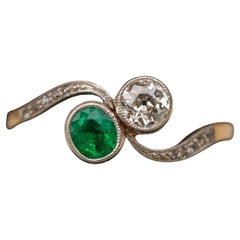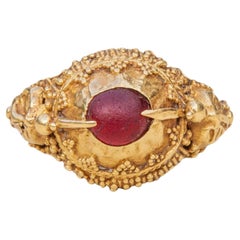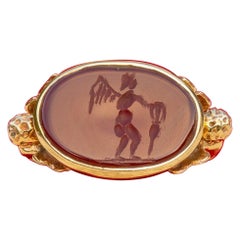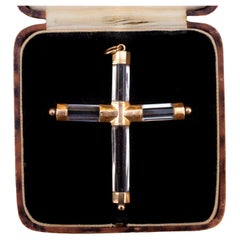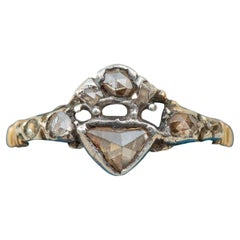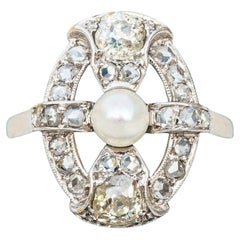Ravensbury Antiques
Vintage 1910s Engagement Rings
Diamond, Emerald
Antique Late 19th Century Engagement Rings
Gold
Early 20th Century Classical Roman Engagement Rings
9k Gold
Antique Mid-17th Century Pendant Necklaces
Rock Crystal, 18k Gold
Antique Mid-18th Century Rococo Engagement Rings
Diamond, 18k Gold, Silver
Vintage 1920s Art Deco Engagement Rings
Diamond, Cultured Pearl, Platinum
Antique 15th Century and Earlier Engagement Rings
Amethyst, 22k Gold
Antique 15th Century and Earlier Signet Rings
Agate, 22k Gold
Mid-20th Century Link Bracelets
Aquamarine, 18k Gold
Antique 19th Century Link Bracelets
Diamond, Opal, Gold
Antique 16th Century Italian Renaissance Engagement Rings
Chalcedony, 22k Gold
Antique Late 19th Century Victorian Bangles
Diamond, 14k Gold
Antique 15th Century and Earlier Engagement Rings
Carnelian, Gold
Antique 15th Century and Earlier European Engagement Rings
Garnet, 22k Gold
Antique Mid-19th Century Indian Late Victorian Engagement Rings
Ruby, Gold, 22k Gold
Antique Late 19th Century Victorian Bangles
Pearl, 15k Gold
Antique Mid-19th Century Pendant Necklaces
15k Gold
Early 20th Century Signet Rings
Gold, Steel
Early 20th Century Three-Stone Rings
Diamond, Ruby, Sapphire, 14k Gold
Antique Late 19th Century Victorian Brooches
Diamond, 15k Gold, Silver
Antique Mid-19th Century Thai Band Rings
Diamond, Ruby, 22k Gold
Antique 15th Century and Earlier Italian Classical Roman Signet Rings
Onyx, Gold
Early 20th Century French Etruscan Revival Choker Necklaces
Gold, 18k Gold
Antique Early 19th Century English Georgian Cluster Rings
Diamond, Ruby, 22k Gold
Antique 19th Century Thai Cluster Rings
Diamond, Ruby, Emerald, Gold
Antique 15th Century and Earlier Javanese Signet Rings
Ruby, Gold
Antique Early 1700s Italian Baroque Band Rings
Turquoise, Gold
Antique 18th Century Indian Signet Rings
Carnelian, Gold
Antique 19th Century Thai Cluster Rings
Diamond, Ruby, Gold
Antique Late 18th Century French Rococo Signet Rings
Gold, Enamel
Antique Mid-19th Century Thai Victorian Cluster Rings
Diamond, 22k Gold
Antique Mid-19th Century French Georgian Engagement Rings
Diamond, Emerald, 18k Gold
Antique Late 18th Century Portuguese Georgian Cluster Rings
Rock Crystal, 15k Gold
Antique Late 18th Century Dutch Georgian Cluster Rings
Diamond, 18k Gold
Antique Early 19th Century French Georgian Chandelier Earrings
Diamond, 10k Gold, 18k Gold
Antique Late 18th Century English Georgian Signet Rings
Antique Mid-19th Century French Belle Époque Signet Rings
Chalcedony, Silver
Antique Early 19th Century Italian Georgian Signet Rings
Agate, 18k Gold
Antique Early 1800s Italian Georgian Cluster Rings
Diamond, Ruby, 14k Gold, Silver
Antique Late 18th Century French Georgian Solitaire Rings
Garnet, Gold
Antique Mid-19th Century French Victorian Cluster Rings
Agate, Diamond, 18k Gold
Antique Early 1900s English Edwardian Signet Rings
18k Gold, Enamel
Antique Late 18th Century Thai More Rings
Diamond, Emerald, Ruby, 22k Gold
